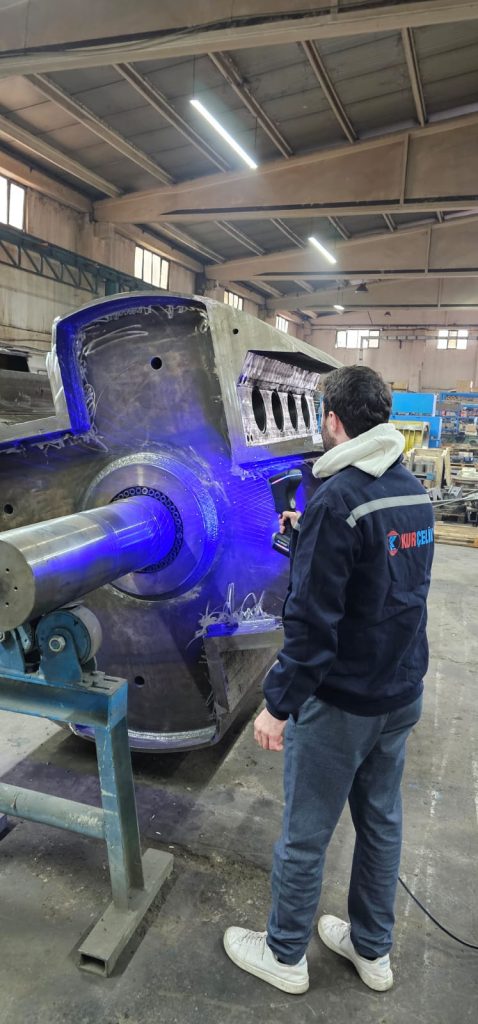Industrial Sheet Metal Applications of 3D Laser Scanning Technology at Kurçelik A.Ş.
As Kurçelik A.Ş., we have introduced 3D laser scanning technology in our industrial sheet metal solutions. This advanced technology provided by the 3D scanner offers great advantages to our company by capturing precise three-dimensional data of objects and surfaces.
How Does a 3D Laser Scanner Work?
- Structured Light Projection: The 3D scanner projects a structured light, usually consisting of line or grid patterns, onto the surface of the object to be scanned.
- Data Capture: Structured light reflects off the object surface and is detected by the scanner’s cameras. These cameras capture changes in the projected light and collect data that can be used to measure the shape and distance of the object.
- Data Processing: The data captured by 3D is processed using specialized software. This software combines camera information as well as projection patterns and recognition algorithms to create a digital three-dimensional model of the scanned object.
- Calibration and Registration: Calibration of the scanner is important for accurate measurement during the scanning process. Also, if multiple parts of the object are scanned, the different scans need to be aligned correctly and a consistent pattern needs to be created.

How do we use 3D Scanning Technology as Kurçelik A.Ş.?
- Product Design and Development: 3D laser scanning is used to convert the geometry of existing parts or prototypes into digital models. These models are the basis for making design changes, generating data to be used in mold or casting production, and performing virtual simulations.
- Quality Control and Process Assurance: 3D laser scanning allows scanned parts to be compared against CAD models or original specifications, verifying quality and detecting deviations. This technology helps to identify production defects, perform dimensional inspections and ensure the precision of manufactured products. As Kurçelik A.Ş., we support our commitment to quality with this technology.
- Repair and Maintenance: By scanning damaged or worn components, we are able to create precise 3D models for the development of spare parts. This speeds up the production process and ensures a better fit of the spare parts.
- Reverse Engineering: 3D laser scanning can be used to create an accurate CAD model by scanning an existing part. This makes it easier to remanufacture products or improve designs.
- Documentation and Archive: We use 3D laser scanning technology to create a complete digital representation of the objects and components in our sheet metal branch. This provides a precise and detailed digital file for historical tracking, technical documentation and version control.
Conclusion
3D laser scanning applications we realize with the 3D scanner stand out as a versatile tool in industrial product production. By providing precise and detailed measurements of objects and components, it provides great convenience in areas such as design, quality control and reverse engineering. By using this technology, we make our processes more efficient, reduce costs and guarantee the quality of our services.
